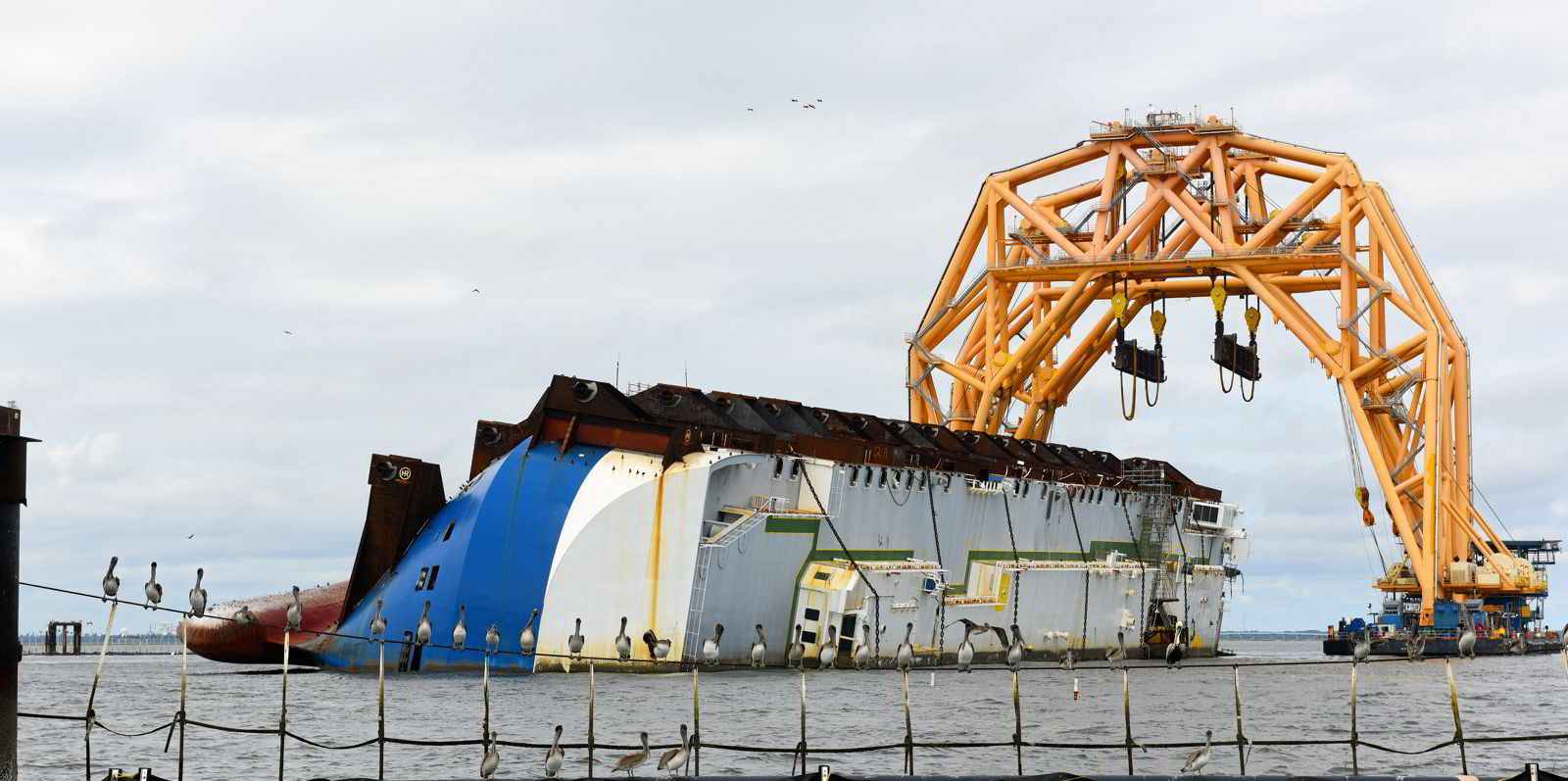A rare six-month run without an International Group of P&I Clubs pool claims has come to an end, with three claims now reported.
The International Group’s 13 members share claims in excess of $10m.
The unusual period in the first half of the year without a pool claim has helped protection and indemnity clubs to report significantly improved underwriting results.
Until this year, their finances had been hit hard by three successive years of record pool claims around $500m after a small — but exceptionally expensive — number of major casualties such as the 203,000-dwt Wakashio (built 2007) and 7,700-ceu Golden Ray (built 2017).
The second half of the policy year, during the northern hemisphere winter, is typically when most pool claims get reported.
The sinking of the 8,400-dwt Kelsey 2 (built 2002) in the Taiwan Strait in October has broken the run and represents the first pool claim of the year. The ship was entered with the Japan P&I Club.
Two other claims filed on a precautionary basis with the International Group have the potential to develop into pool claims but have not yet broken the $10m threshold.
It is understood one of these is the 2,007-teu TSS Pearl (built 2008), which sank off the Red Sea port of Jizan in October.
The ship is entered with the American Club.
All three claims are relatively modest and not likely to break the $100m mark, at which point they would be covered by the group’s reinsurance scheme.
The low claims year has the benefit of tempering increases in the International Group’s reinsurance costs, which are passed on to shipowners.
Loss records
Broker Aon has highlighted the need for owners to be aware of International Group pool claims and how it affects their rating.
It pointed out that each club’s contribution to pool claims is allocated to the loss record of shipowner members.
“It is worth highlighting again the importance of members understanding how pool claims affect their loss record,” Aon said in its recent pre-renewal P&I review.
“Each club, apart from Shipowners, allocates pool costs to the loss record based on that club’s expected contribution to the pool. Last year we mentioned this, as it is important for a member to understand how large their club’s contribution is, and therefore how much is allocated to their loss record.”
P&I clubs appear to be placing additional emphasis on loss records of members when calculating rates. In a year of exceptionally low pool claims, Aon argues that owners should see the benefit.
“If there are zero or very few pool claims, then how much should be allocated to the loss record in the form of pool costs? We would argue that the allocation should be reduced significantly, which would in turn improve the loss records of most members and therefore lead to lower increases,” it said.





